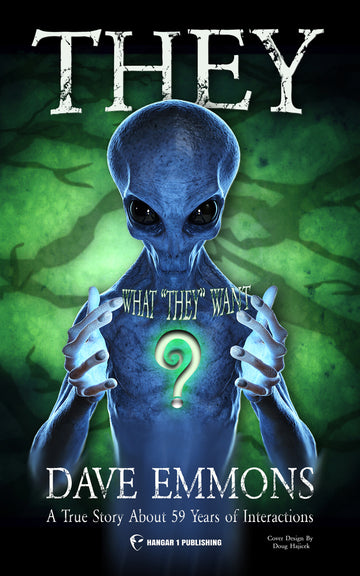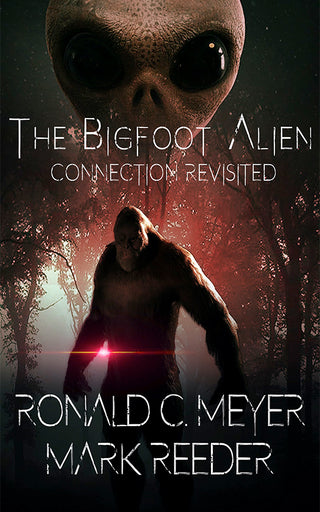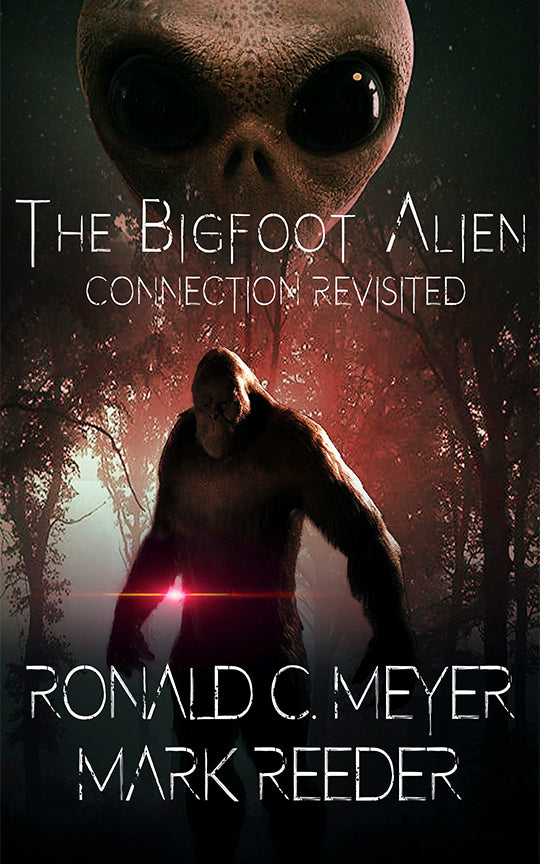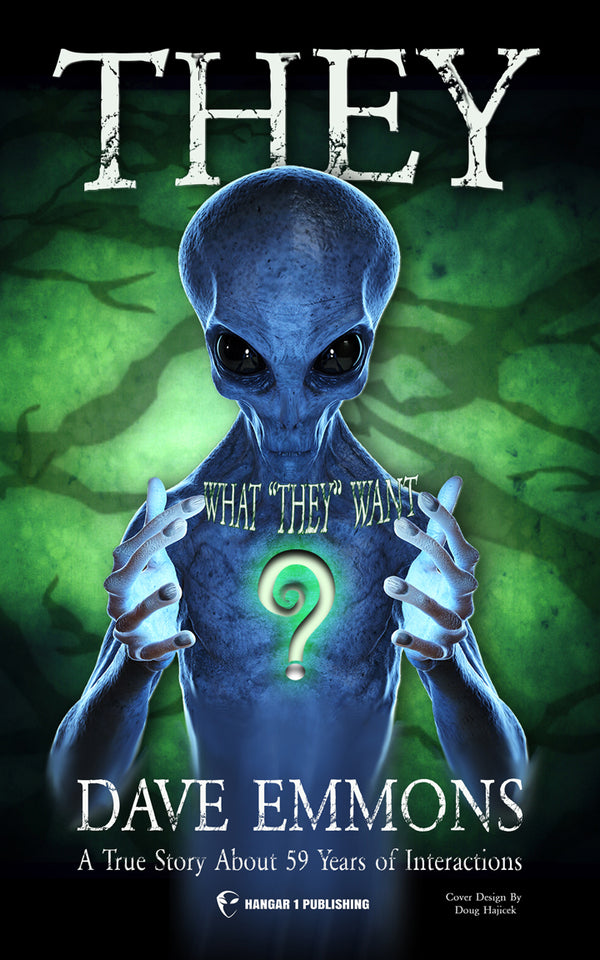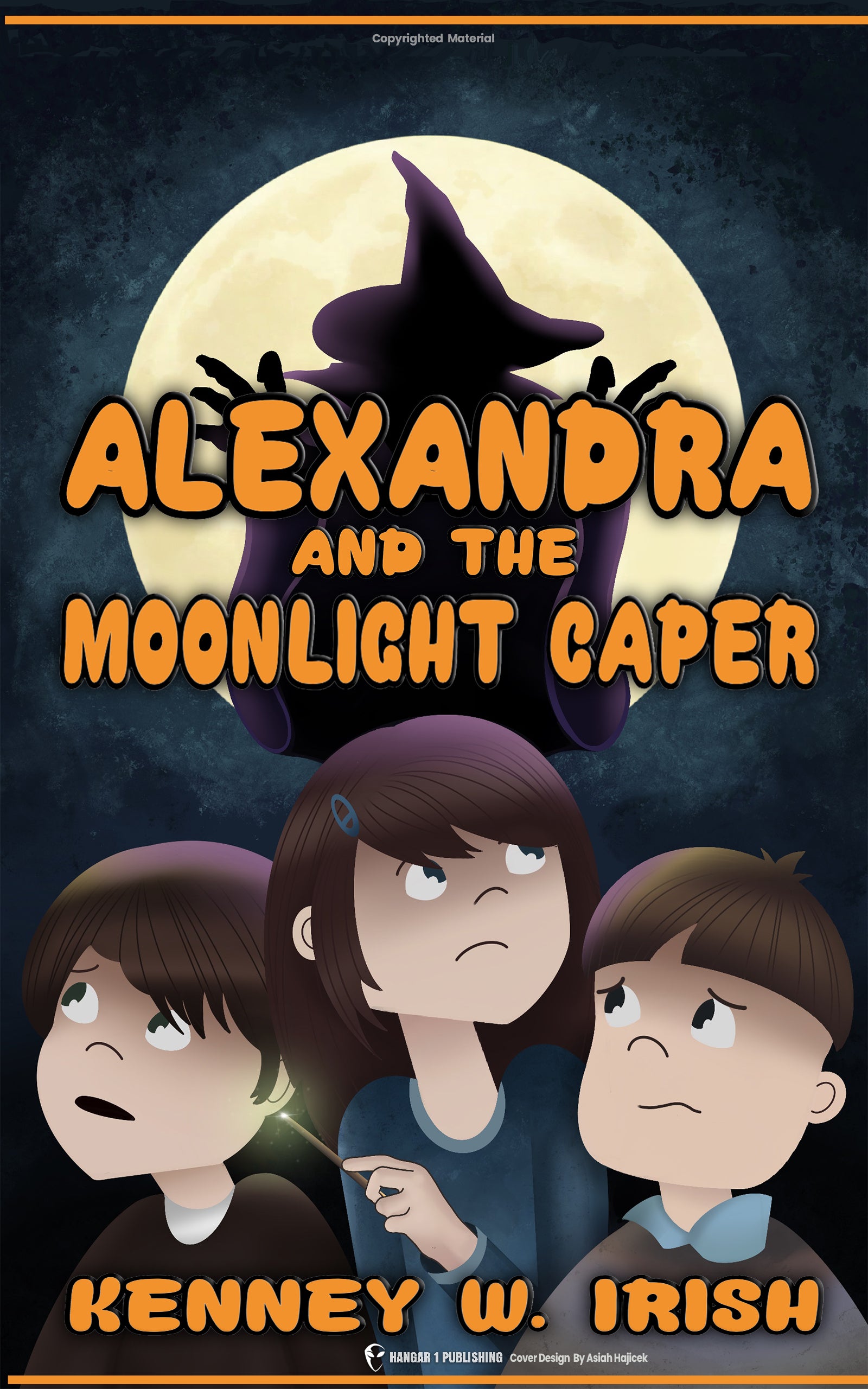Alien Languages: The Science of Cosmic Communication

By Amara Okafor, Ufologist
What would it sound like if an alien spoke to you right now? Would you hear words, clicks, or a symphony of colors dancing through the air? Perhaps you'd feel electrical impulses running across your skin or detect subtle changes in magnetic fields. Or maybe you wouldn't recognize it as communication at all.
The question of how we might communicate with extraterrestrial intelligence has captivated human imagination for centuries. It exists in a fascinating intersection where rigorous linguistic theory meets boundless scientific speculation. This isn't just idle curiosity—it's a serious scientific inquiry with profound implications. If we ever make contact with alien life, understanding their language might be the difference between peaceful exchange and catastrophic misunderstanding.
From Fiction to Science: The Evolution of Alien Languages
The first fictional alien language appeared in the 17th century work "The Man in the Moone," which described lunar inhabitants speaking a language consisting "not so much of words and letters as tunes and strange sounds." This early example set the stage for centuries of creative exploration.
Percy Greg's "Martial" language in his 1880 novel "Across the Zodiac" marked one of the first formal descriptions of an alien language. As science fiction matured, so did its treatment of extraterrestrial communication. Early space operas often bypassed linguistic challenges entirely—aliens conveniently spoke perfect English or communication happened through universal translators.
Hard science fiction eventually embraced more realistic linguistic challenges. As linguist and science fiction author Suzette Haden Elgin observed, "Language is the perfect science fiction device. It's familiar enough that readers accept it, but alien enough that you can do almost anything with it."
This evolution mirrors our growing understanding of language itself. We've moved from simplistic "alien gibberish" to constructed languages with complex grammar, vocabulary, and cultural contexts—some even created by professional linguists.
Famous Fictional Alien Languages
No discussion of fictional alien languages would be complete without mentioning Klingon from Star Trek. Created by linguist Marc Okrand, Klingon stands as perhaps the most successful constructed alien language ever made. Deliberately designed to sound alien, it uses a very rare Object-Verb-Subject word order found in less than 1% of Earth languages.
"Klingon has been designed to be not only foreign in its grammar but also to violate what we know about the universals of human language," explains language creator David Peterson. This violation of linguistic norms makes Klingon feel genuinely alien while remaining learnable by humans.
The language has grown beyond its fictional origins. The Klingon Language Institute publishes scholarly articles about the language, fans conduct marriage ceremonies in Klingon, and Shakespeare's works have been translated into this warrior tongue. I find it remarkable how a language created for a television show has developed such cultural significance—it's become a living language with its own community of speakers.
James Cameron's blockbuster "Avatar" introduced another notable constructed language: Na'vi. Linguist Paul Frommer created an extensive vocabulary and grammar for the tall blue aliens. What makes Na'vi particularly interesting is its ongoing evolution—with Frommer's guidance, fans continue to expand the language beyond its original cinematic boundaries.
In the animated show Futurama, creators embedded a linguistic puzzle for attentive viewers. The show features two alien languages—the first a simple substitution cipher, the second a more complex mathematical encryption. This playfulness with language invites audience participation, transforming passive viewers into active decoders.
J.R.R. Tolkien's Elvish languages deserve special recognition as pioneers of constructed languages. As a philologist, Tolkien created Quenya and Sindarin with historical linguistic evolution in mind—these languages have internal consistency, etymological histories, and dialectical variations. Though technically not alien (they're spoken by fantasy races, not extraterrestrials), they established the gold standard for creating believable non-human languages.
Beyond Human Constraints: Theoretical Frameworks
How different could alien languages really be? This question divides linguistic theorists. Noam Chomsky suggested that "the Martian language might not be so different from human language after all," proposing that certain universal grammatical structures might extend beyond Earth.
Others argue that alien cognitive structures could produce communication systems fundamentally incomprehensible to humans. Linguist Jeffrey Henning created "Fith"—a language specifically designed to "violate linguistic universals and could never be spoken by a human in actual practice." Fith uses a Last-In-First-Out stack structure where words are often spoken long before their meaning becomes clear, creating a memory challenge impossible for human brains to process in real-time.
Even more exotic is Denis Moskowitz's "Rikchik"—a language designed for green, one-eyed aliens with 49 tentacles. Seven of these tentacles are used for a complex sign language that human anatomy simply cannot replicate. The written version uses a logographic system with unique structural features unlike any human writing system.
Consider also possibilities that break our most basic assumptions about language. Jorge Luis Borges imagined Tlön, a world with a language having no nouns—only verbs and modifiers. This isn't merely fiction: some linguists argue that certain Earth languages like Salish might not distinguish between nouns and verbs in the way most languages do.
These theoretical constructs push us to question our fundamental assumptions about language. What if alien communication operated on principles entirely outside our conceptual framework? Perhaps they communicate through quantum entanglement or have concepts for which we have no cognitive capacity whatsoever.
The Biology of Alien Communication
The way aliens might communicate would be profoundly shaped by their biology and environment. Earth's biodiversity provides fascinating models for potential alien communication systems beyond sound and sight.
Consider cephalopods like octopuses and cuttlefish, which can generate at least 13 distinct color patterns on their skin for communication. This visual language allows rapid transmission of complex information without sound. An advanced species with similar capabilities might develop a sophisticated visual language exceeding human comprehension in both speed and complexity.
Electric fish offer another intriguing model. Species like the electric eel generate and detect electrical signals, using them not just for stunning prey but for communication. In water, which conducts electricity, this communication mode works efficiently. An alien species evolving in a liquid environment might develop sophisticated electrical language.
Some animals sense magnetic fields for navigation—birds have magnetite crystals in their beaks that act as natural compasses. It's not farfetched to imagine aliens evolving organs specifically designed for generating and detecting magnetic field variations as a communication medium.
The most speculative—yet scientifically grounded—possibility might be biological radio. While no Earth creature naturally generates radio waves, the basic components exist: animals that generate electricity and metals that could form biological antennas. An alien species might evolve specialized organs containing metal elements that function as transmitters and receivers, allowing them to communicate across vast distances.
As one researcher speculates: "It's not hard to imagine an alien organism born with metals inside its body to form a dedicated organ for emitting and detecting radio waves."
The Translation Challenge: Bridging Cosmic Divides
If we intercepted an alien signal tomorrow, could we decipher it? This question has occupied linguists, mathematicians, and cryptographers for decades.
The foundational challenge would be establishing reference—connecting symbols (whether auditory, visual, or otherwise) to meanings. When I point at the sun and say "sun," an alien might interpret this as referring to brightness, yellow color, celestial objects generally, or even the concept of radiation.
This is where universal concepts become crucial bridges. Mathematical principles like 2+2=4 should hold true for any intelligence capable of advanced technology. The periodic table of elements, basic physics, and astronomy might provide common ground. These universals form the backbone of constructed interspecies languages like Hans Freudenthal's Lincos (Lingua Cosmica).
Lincos begins with simple mathematical concepts using patterns of pulses—"·" represents 1, "· ·" represents 2, and "· · > ·" expresses "2 is greater than 1." Through progressively more complex patterns, it attempts to build a framework for communicating abstract concepts across species boundaries.
Modern computational approaches might also provide valuable tools. Information theory, pattern recognition algorithms, and machine learning techniques used to analyze unknown human languages could apply to alien communication. Recent research in AI language emergence may offer particularly valuable insights:
"If we are able to obtain some written alien text together with some context (such as visual information relating to the text), we could apply the same statistical tools to analyze them," suggests researcher Olaf Lipinski, who studies how AI systems develop languages.
The quantity of data would be crucial. As one researcher notes: "An alien hearing our radio is not us looking at a handful of damaged tablets written by different generations using different local lingos."
With sufficient alien communication data—whether from intercepted signals or direct contact—pattern-seeking algorithms could potentially identify linguistic structures and meaning, even in communication systems vastly different from our own.
Real Scientific Efforts in Alien Communication
The scientific community has made several serious attempts to communicate with potential extraterrestrial intelligence, evolving from early fantastical proposals to sophisticated modern initiatives.
In 1820, German mathematician Carl Friedrich Gauss proposed creating an enormous Pythagorean theorem diagram in Siberia using wheat fields and pine trees, large enough to be visible from the moon. In the 1870s, French inventor Charles Cros suggested using giant mirrors to burn messages onto the surfaces of Mars or Venus.
The modern era of extraterrestrial communication began with radio. In November 1974, at Puerto Rico's Arecibo Observatory, Frank Drake transmitted the first deliberate interstellar message—a binary-encoded pattern containing basic information about humanity, mathematics, DNA structure, and our solar system.
Today, the field has developed into three distinct but related disciplines:
- SETI (Search for Extraterrestrial Intelligence): Passive listening for signals
- CETI (Communication with Extraterrestrial Intelligence): Preparing for dialogue
- METI (Messaging Extraterrestrial Intelligence): Actively sending messages
Perhaps the most famous communication attempt is the Voyager Golden Records, launched aboard the Voyager spacecraft in 1977. These gold-plated copper discs contain sounds of Earth (from thunderstorms to whale songs), music from diverse cultures, greetings in 55 languages, and 116 images encoded in analog form. The records represent humanity's time capsule to the stars, though the odds of their discovery by extraterrestrial intelligence are astronomically small.
More recent efforts include the Cosmic Call messages (1999 and 2003), which used a modified version of Freudenthal's Lincos language to transmit information to nearby stars. These messages began with basic mathematical concepts before progressing to information about Earth, humans, and our solar system.
Not all scientists support these active messaging efforts. British Astronomer Royal Sir Martin Ryle expressed concern after the Arecibo transmission: "It was very hazardous to reveal our existence and location to the Galaxy; for all we know, any creatures out there might be malevolent—or hungry."
This caution highlights a fundamental question: Should we announce our presence to the cosmos before knowing what's out there?
Xenolinguistics: The Emerging Field
Xenolinguistics—the study of alien languages—has evolved from a science fiction concept to a serious academic discipline. Though small, with only 20-30 active researchers, it represents a fascinating intersection of linguistics, astrobiology, cognitive science, and anthropology.
"I assumed, like other SETI people, that language was really kind of irrelevant to communicating with aliens," admits Douglas Vakoch, president of METI International. "But as I got deeper into METI, my mental orbit shifted: thinking about alien language was actually a catalyst for challenging our assumptions."
A key insight from xenolinguistics is that studying potential alien communication systems forces us to examine our unstated assumptions about language itself. Animal behavior researcher Irene Pepperberg, who has extensively studied parrot cognition and communication, points out: "Nonhuman communication is more sophisticated and varied than people assume—and it encompasses modes of interaction and expression humans don't even have access to."
Dogs perceive the world primarily through smell, dolphins and bats hear frequencies beyond human range, and birds see ultraviolet light. Each of these sensory differences would fundamentally shape how a species communicates. By studying these Earth-bound examples, xenolinguists gain insights into how truly alien communication might function.
Perhaps the most thought-provoking aspect of xenolinguistics is what it reveals about human preconceptions. Linguist Elin McCready challenges the common assumption that language's primary purpose is to transmit factual information: "The assumption is very much that everybody in the universe would use linguistic or languagelike systems to do the same things that we do. But why?"
Human language serves many non-factual purposes: telling jokes, creating art, performing rituals, establishing social bonds, and even intentional deception. Why would alien language be any different? This question forces us to reconsider the fundamental nature and purpose of communication itself.
Creating Alien Languages: Tools for Writers and Researchers
For writers, filmmakers, and game developers, creating believable alien languages requires balancing alienness with human comprehensibility. David Peterson, who created languages for "Game of Thrones" and "The Witcher," suggests several approaches:
The "false theory" strategy involves taking a linguistic theory that's incorrect for human languages and making it true for an alien language. For example, if you created a language where singular terms and predicates can never co-refer—a property human languages don't have—you'd get something that feels distinctly non-human.
Another approach is systematically violating linguistic universals—creating languages with properties that human languages never exhibit. Andrea Morrow explores "impossible languages" like one where questions are formed by completely reversing the word order of statements, or where negation must always be the fourth word in a sentence regardless of meaning.
Many fictional alien languages fall into what's called the "Indo-European Alien Language" trap—they may look exotic on the surface but actually function just like English or other familiar languages. As one critic notes: "If the aliens aren't speaking English, they're speaking something like it."
True linguistic alienness requires deeper structural differences: novel grammatical categories, unfamiliar relationships between concepts, or entirely different organizational principles. The circular, non-linear language featured in the film "Arrival" (based on Ted Chiang's story "Story of Your Life") presents one compelling possibility—a language that enables simultaneous awareness of past and future events.
For those creating alien languages, several principles help maintain believability:
- Consider the aliens' biology and environment—how would their physical form and surroundings shape communication?
- Develop consistent internal rules—even systems that seem chaotic to us would have patterns recognizable to their users
- Incorporate cultural elements—language reflects values, history, and worldview
- Push beyond human linguistic patterns without becoming incomprehensible
As Peterson points out: "The best fictional languages aren't just English with funny words; they're windows into entirely different ways of thinking."
What Alien Languages Reveal About Ourselves
When we study potential alien languages, we learn as much about human cognition as we do about extraterrestrial possibilities. Our understanding of language is inevitably filtered through human experience and biology.
"I have no clue if there are aliens out there," admits Douglas Vakoch. "I am confident—I have already experienced—that when we ask these questions, they transform how we view ourselves, and they help us clarify what's valuable."
This perspective reveals xenolinguistics' deeper purpose. By attempting to transcend our linguistic limitations, we become more aware of how language shapes—and is shaped by—human cognition. Even if we never encounter alien intelligence, the exercise expands our understanding of communication itself.
Philosopher of science Matthew Brown suggests that xenolinguistics serves primarily to "improve terrestrial fields such as linguistics, human psychology or animal behavior by asking hypothetical questions about alien language that push the boundaries."
This boundary-pushing creates intellectual humility. When considering truly alien minds, we must acknowledge our anthropocentric biases—the tendency to project human categories, concepts, and motivations onto non-human entities. Even our most "alien" imagined languages remain products of human creativity, subject to the constraints of human cognition.
Perhaps the most profound question xenolinguistics raises is whether we could ever truly understand an alien mind. Complete mutual comprehension might be impossible, but meaningful exchange could still occur. As linguist Elin McCready frames it: "When we're faced with a being that is doing something potentially quite different than we are, how do we try to interact and find common ground?"
This question extends beyond hypothetical aliens to our daily interactions with other humans, cultures, and even non-human animals on Earth. In this way, xenolinguistics becomes a metaphor for all communication across difference.
The next time you look at the stars, consider that somewhere in the cosmos, another intelligence might be wondering how to speak to us. Would we recognize their hello? Would they comprehend our response? These questions may remain unanswered, but they inspire us to listen more carefully to all the voices around us—human, animal, and perhaps someday, alien.
As astronomy writer Carl Sagan once asked: "Are we alone in wanting to know if we are alone?" In that simple question lies the essence of why alien languages matter—they represent our desire to connect across vast gulfs of difference, to find kinship in the cosmos, and to understand minds unlike our own.
From Bigfoot to UFOs: Hangar 1 Publishing Has You Covered!
Explore Untold Stories: Venture into the world of UFOs, cryptids, Bigfoot, and beyond. Every story is a journey into the extraordinary.
Immersive Book Technology: Experience real videos, sights, and sounds within our books. Its not just reading; its an adventure.









